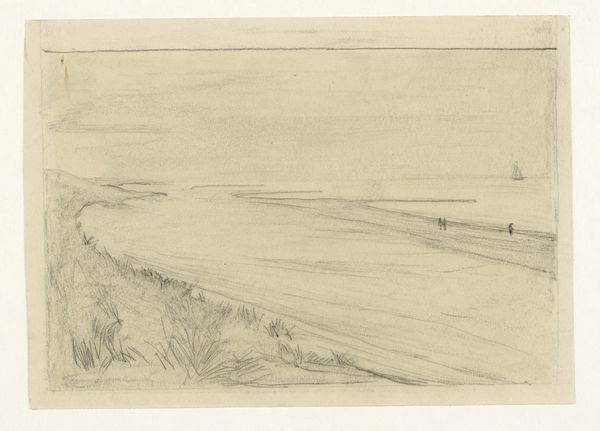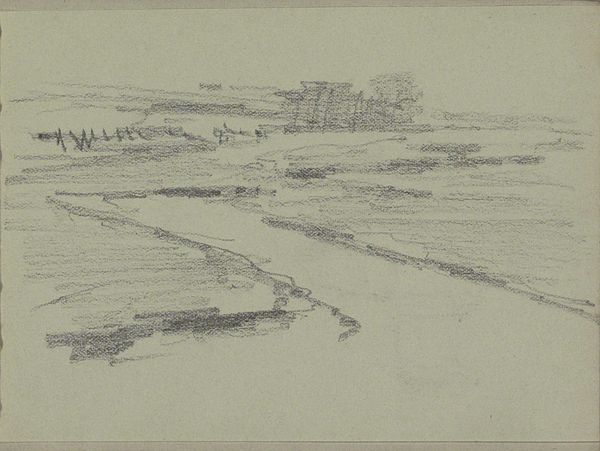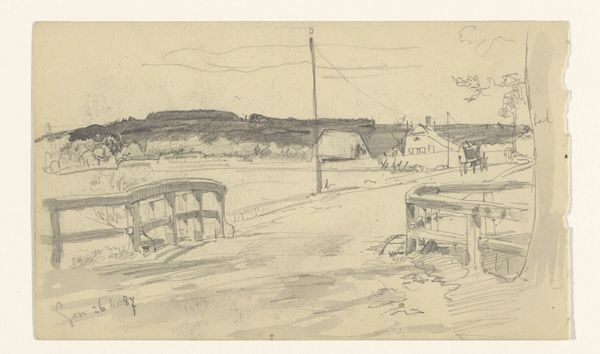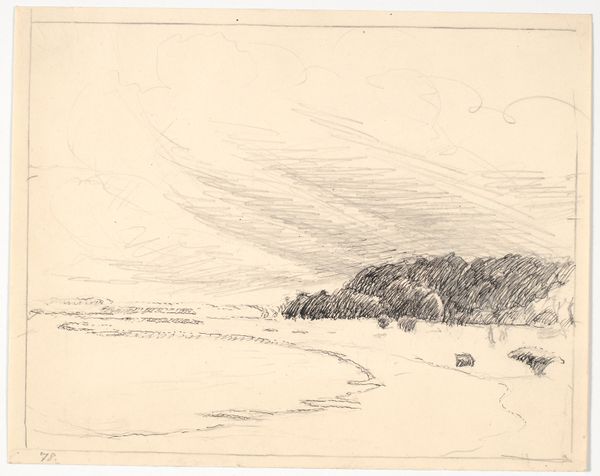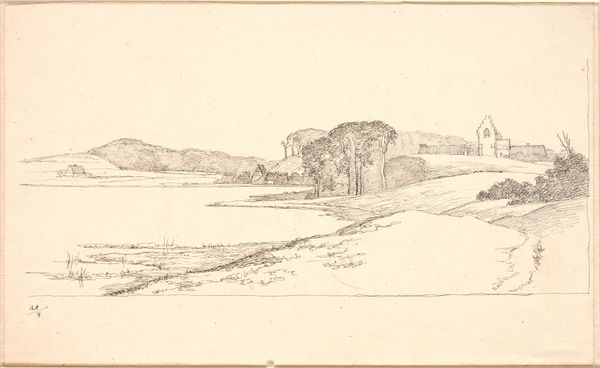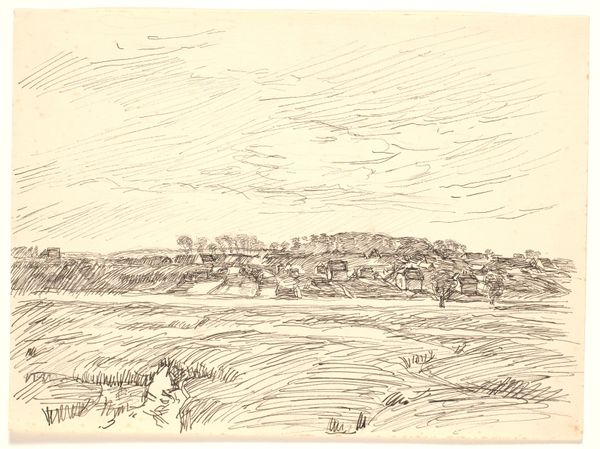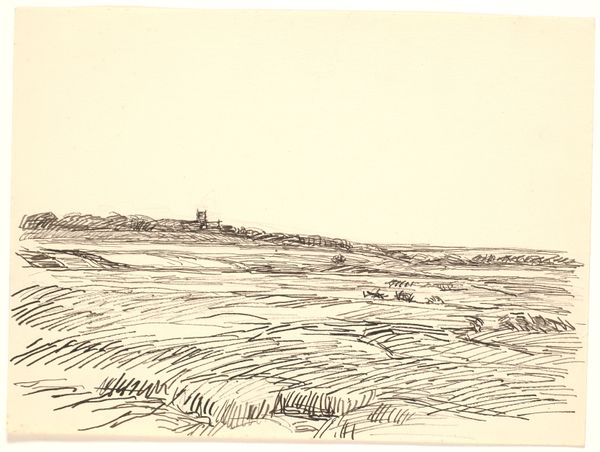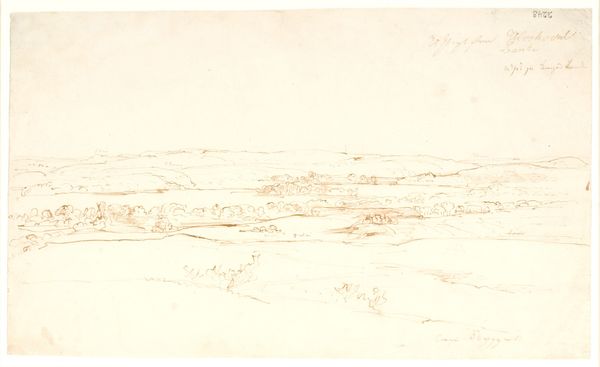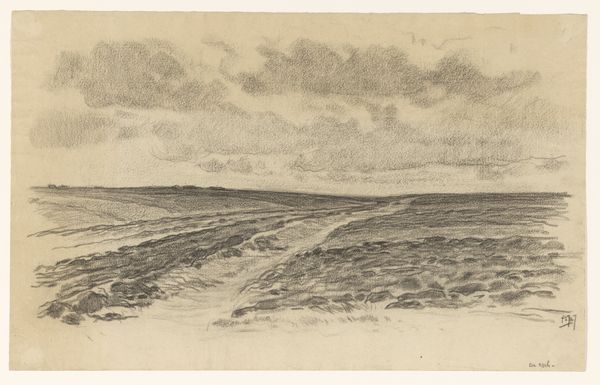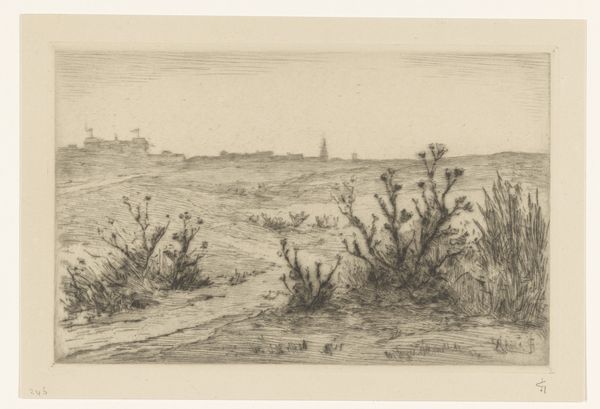
Studieblad med tre landskaber fra jylland. Øverst: landskab med pløjemark; midten: landskab med høje bakker; nederst: landskab med hus og vej 1880s
0:00
0:00
Dimensions: 250 mm (height) x 376 mm (width) (bladmaal)
Curator: Before us is a drawing by Hans Smidth, titled "Studieblad med tre landskaber fra jylland," or "Study Sheet with Three Landscapes from Jutland," dating back to the 1880s. It's rendered in pencil. Editor: My initial response is one of quiet observation. The monochromatic palette lends itself to stillness, but the tiered composition injects this work with some dynamism. There’s something very serene, very contemplative about it. Curator: Precisely. Smidth, active during a pivotal period for Danish art, frequently depicted rural life. Consider how these seemingly simple landscapes speak to broader cultural shifts of the time, a rising interest in rural themes and romanticism, a form of Realism that looks outside urban development to something perhaps a little lost. Editor: And the rendering of these three distinct landscapes allows for a fascinating exploration of perspective and composition. Each landscape uses varied placement of land forms that serve as foreground, midground and background elements that define their space. Look, too, at the pencil work—it’s incredibly detailed, achieving varied textures and light simply through line work. Semiotically, the marks are relatively uniform, however; meaning lies in the relation between their quantity and position. Curator: Furthermore, look at what he chose to depict. The plow field in the top sketch may very well address concerns about agriculture within Jutland. Similarly, the building atop the land mass could reflect the impact architecture and urbanization had at this time. Editor: But there's a timelessness, too. Roads are often depicted as paths to civilization, yet that winding road appears relatively isolated; civilization exists on the sidelines. Each plane in Smidth’s arrangement could represent an age or layer of culture in the same location—suggesting perhaps our contemporary obsession with "urbanization" may eventually regress again toward a more natural, isolated place. Curator: That offers an interesting vantage. Ultimately, viewing art through a strictly formal or purely historical lens becomes far less helpful if we never synthesize to consider how both interact. This composition gives me the chance to observe how visual and historical interpretation can coincide in something as subtle as line and value. Editor: Indeed, appreciating Smidth's study lies not only in acknowledging historical contexts but also appreciating its enduring qualities as a meticulously crafted composition. This piece resonates even now.
Comments
No comments
Be the first to comment and join the conversation on the ultimate creative platform.
